Abstract
Seven drugs that are known to relax smooth muscle (phenoxybenzamine, phentolamine, thymoxamine, imipramine, verapamil, papaverine, naftidrofuryl) caused erection when injected intracavernosally. Salbutamol, hydralazine, lignocaine and bupivacaine caused tumidity but not erection. Metaraminol and guanethidine caused shrinkage followed by tumidity. Neostigmine, atropine, propranolol and idazoxan had no effect in the doses tried. It is argued that the seven drugs that cause erection do so by relaxing vascular and trabecular smooth muscle within the cavernosal space, and that the two that cause shrinkage of the penis do so by constricting vascular and trabecular smooth muscle within the cavernosal space. It is argued that muscarinic and beta-adrenergic transmission play no important part in erectile mechanisms within the corpora cavernosa. Papaverine, phenoxybenzamine and metaraminol, given intracavernosally, are already used therapeutically. Uses are suggested for thymoxamine, phentolamine, verapamil and guanethidine.
Full text
PDF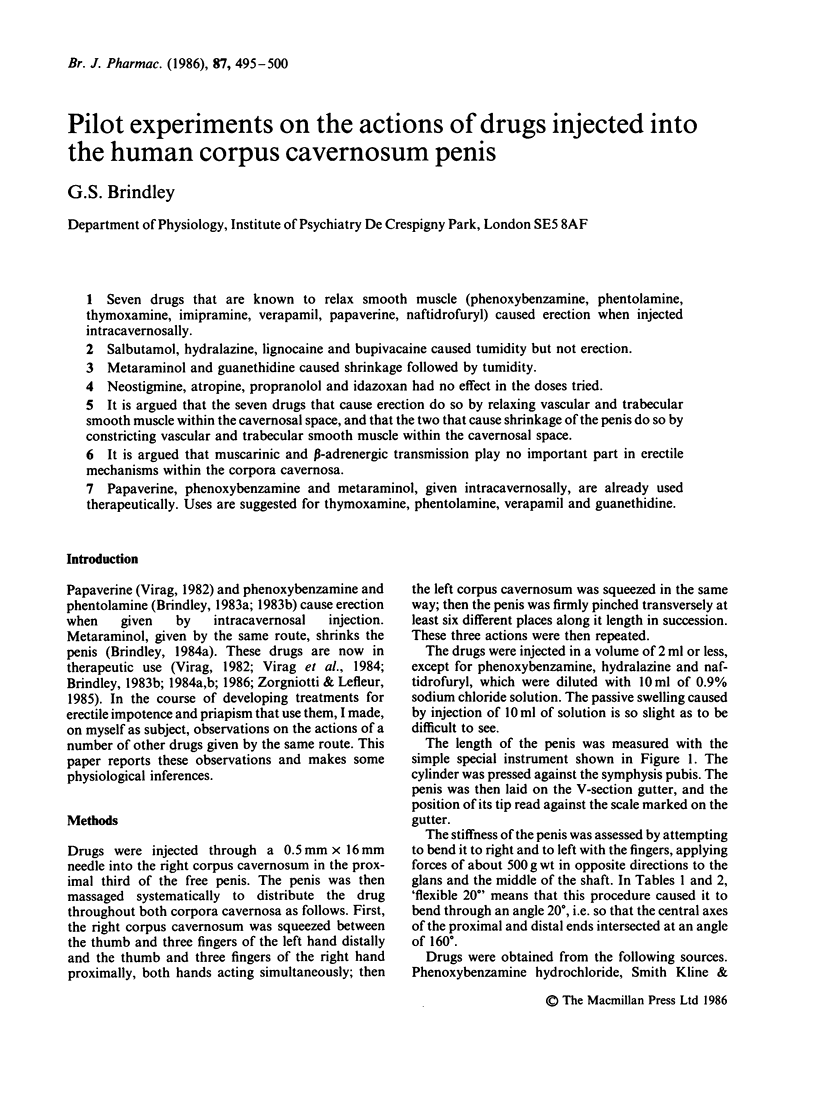
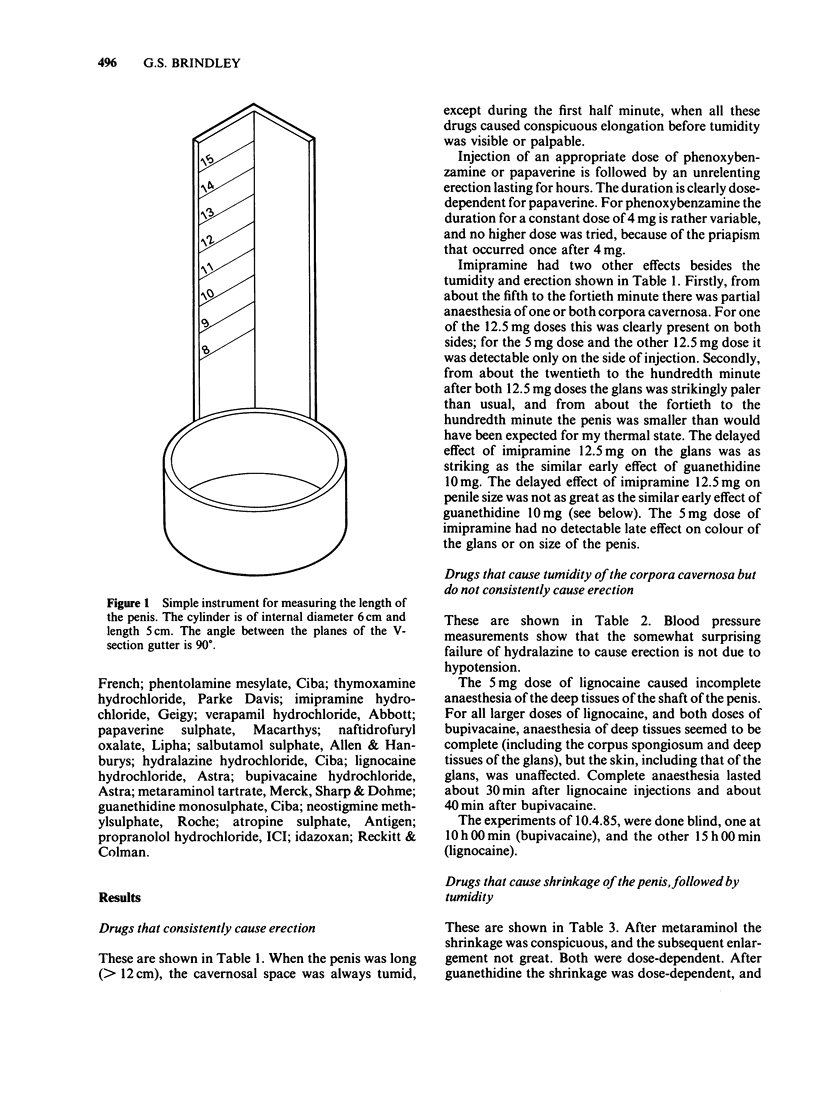
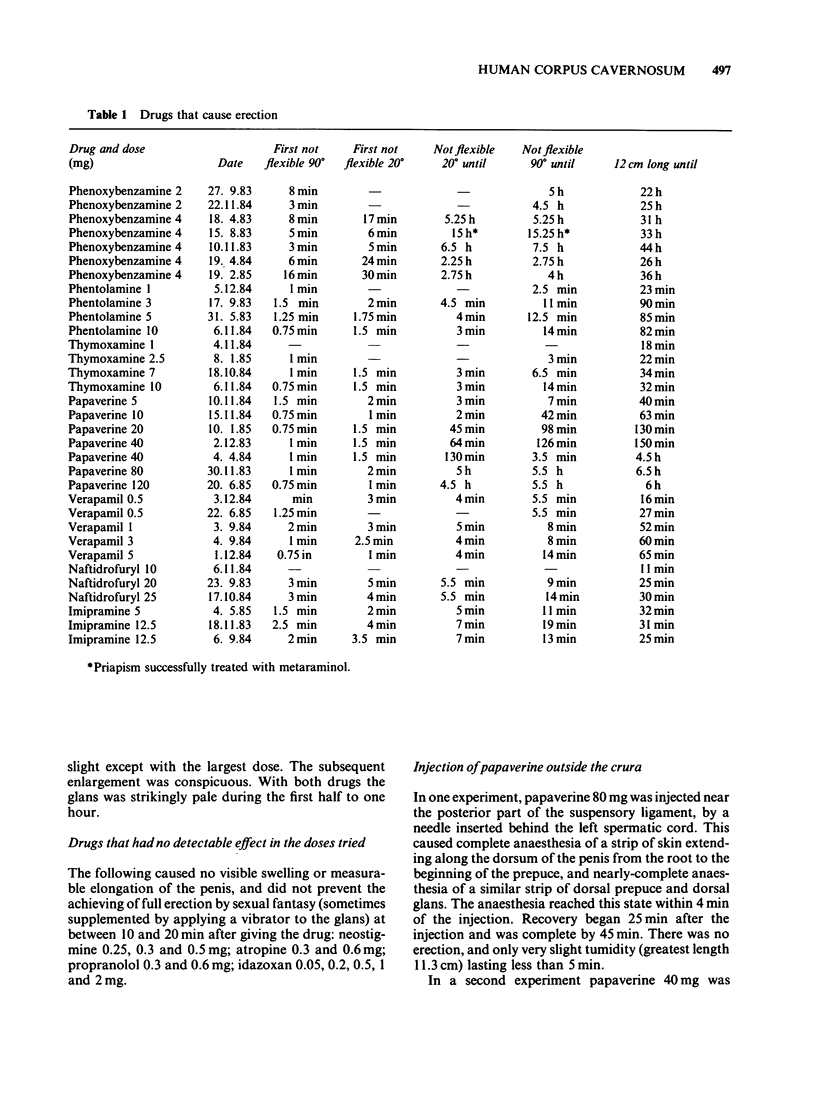
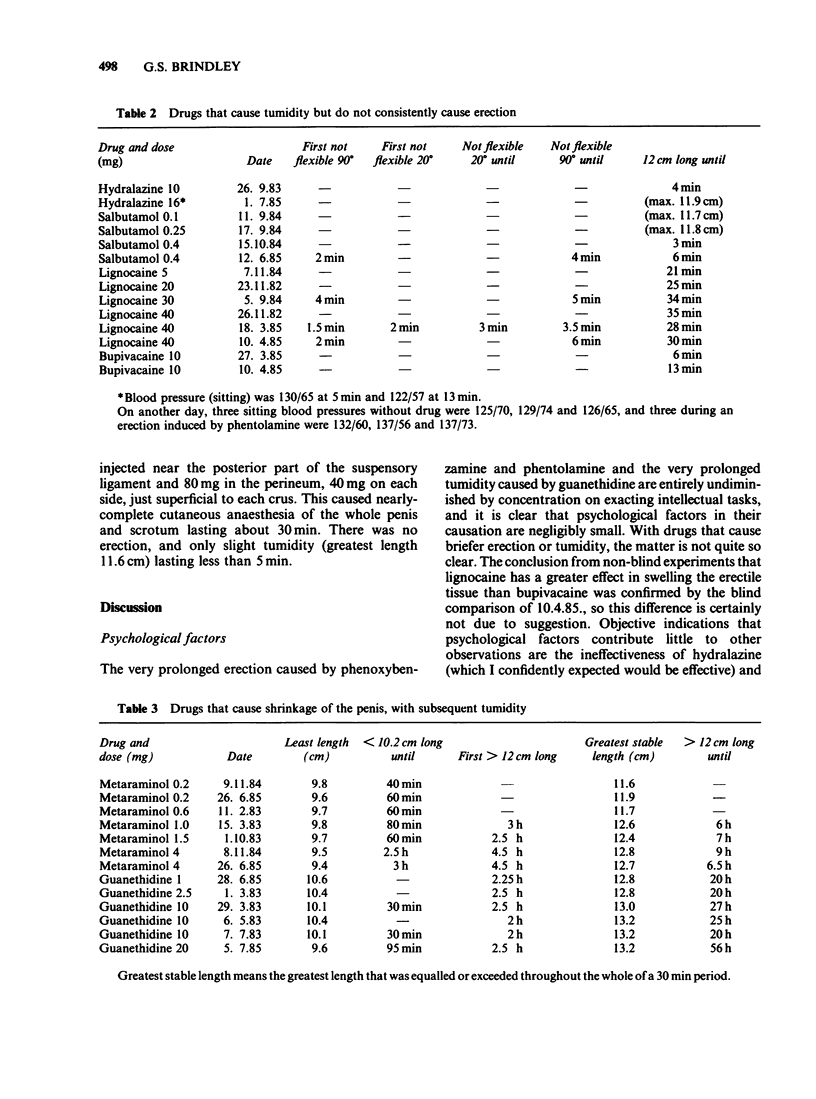
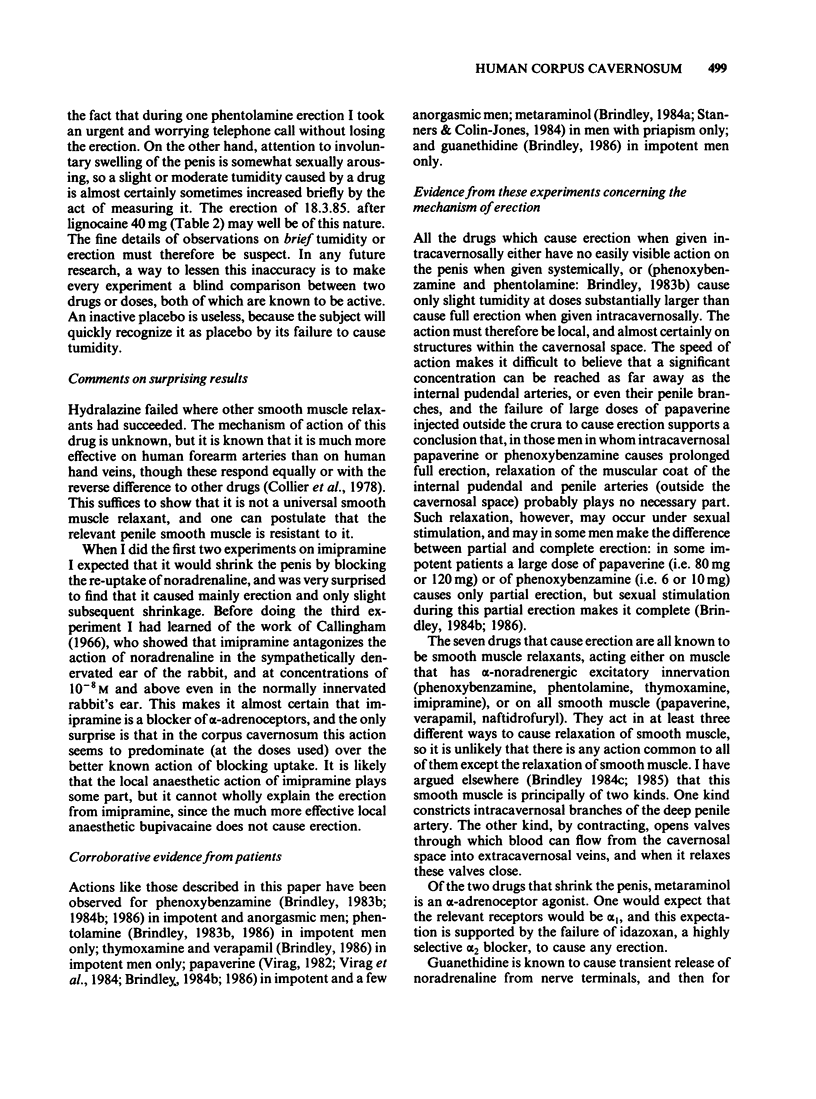
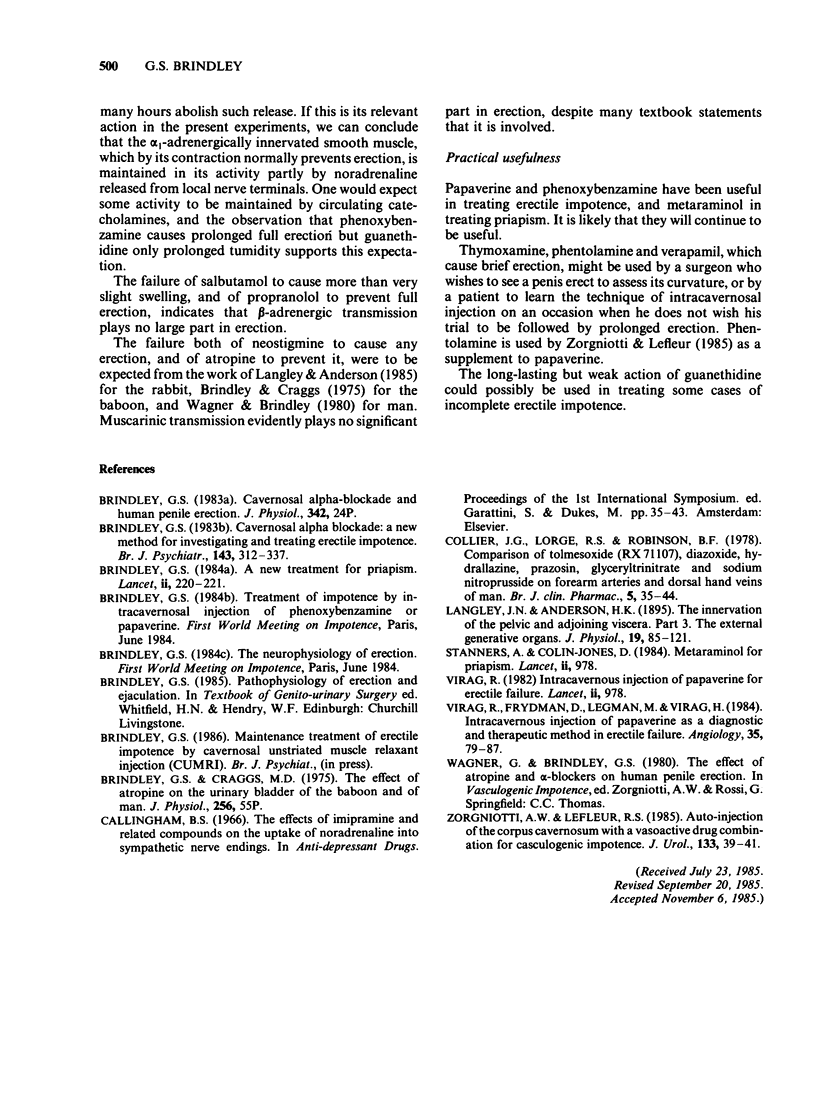
Selected References
These references are in PubMed. This may not be the complete list of references from this article.
- Brindley G. S. Cavernosal alpha-blockade: a new technique for investigating and treating erectile impotence. Br J Psychiatry. 1983 Oct;143:332–337. doi: 10.1192/bjp.143.4.332. [DOI] [PubMed] [Google Scholar]
- Brindley G. S., Craggs M. D. Proceedings: The effect of atropine on the urinary bladder of the baboon and of man. J Physiol. 1976 Mar;256(1):55P–55P. [PubMed] [Google Scholar]
- Brindley G. S. New treatment for priapism. Lancet. 1984 Jul 28;2(8396):220–221. doi: 10.1016/s0140-6736(84)90500-2. [DOI] [PubMed] [Google Scholar]
- Collier J. G., Lorge R. E., Robinson B. F. Comparison of effects of tolmesoxide (RX71107), diazoxide, hydrallazine, prazosin, glyceryl trinitrate and sodium nitroprusside on forearm arteries and dorsal hand veins of man. Br J Clin Pharmacol. 1978 Jan;5(1):35–44. doi: 10.1111/j.1365-2125.1978.tb01595.x. [DOI] [PMC free article] [PubMed] [Google Scholar]
- Stanners A., Colin-Jones D. Metaraminol for priapism. Lancet. 1984 Oct 27;2(8409):978–978. doi: 10.1016/s0140-6736(84)91187-5. [DOI] [PubMed] [Google Scholar]
- Virag R., Frydman D., Legman M., Virag H. Intracavernous injection of papaverine as a diagnostic and therapeutic method in erectile failure. Angiology. 1984 Feb;35(2):79–87. doi: 10.1177/000331978403500203. [DOI] [PubMed] [Google Scholar]
- Zorgniotti A. W., Lefleur R. S. Auto-injection of the corpus cavernosum with a vasoactive drug combination for vasculogenic impotence. J Urol. 1985 Jan;133(1):39–41. doi: 10.1016/s0022-5347(17)48774-x. [DOI] [PubMed] [Google Scholar]


